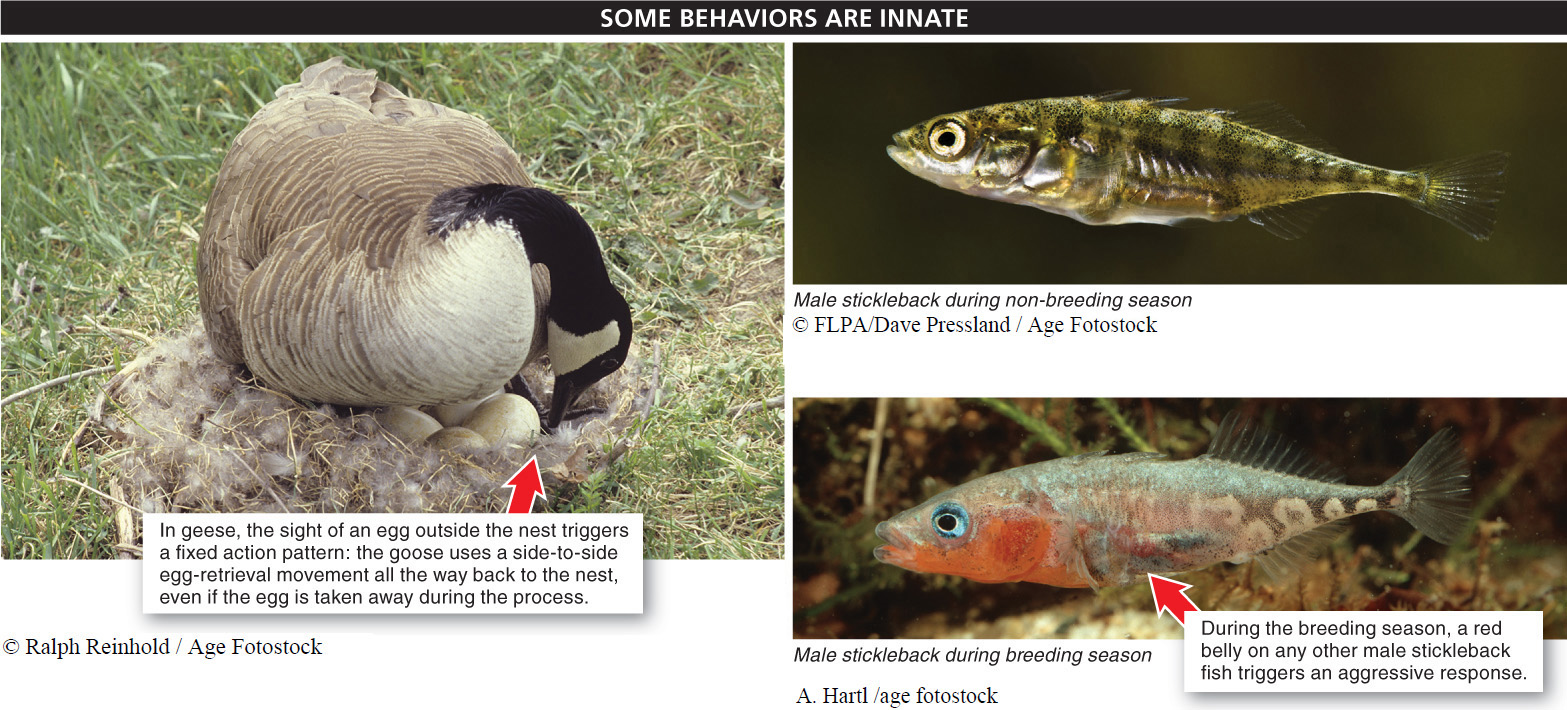In his study of pea plants, Gregor Mendel described a single gene for plant height that caused a plant to be either tall or short. The production of a trait such as plant height, however, is not completely genetically determined. Certain environmental conditions, such as the type of soil and the availability of water, nutrients, and sunlight, also have a role to play. Nearly all physical traits of all organisms are the products not only of genes but also of environmental conditions. When it comes to the production of behaviors, the environment also plays an important role.
The degree to which a behavior depends on the environment for expression, however, varies a great deal. At one extreme are behaviors—
- 1. Egg retrieval in geese. When a goose spots an egg outside its nest (a sign stimulus), a fixed action pattern is triggered. The goose gets out of the nest and rolls the egg back, using a side-
to- side motion, keeping the egg tucked underneath its bill. Once started, a goose continues the behavior to completion, even if the egg is taken away on the way to the nest (FIGURE 9-4).  Figure 9-4No learning required.
Figure 9-4No learning required. - 2. Aggressive displays and attacks by stickleback fish. The bellies of male stickleback fish turn bright red when the breeding season arrives. During this time, a male stickleback reacts aggressively to the sight of a red belly (a sign stimulus) on any other male stickleback. In fact, the males become antagonistic at the sight of anything remotely resembling a red belly. One researcher even noticed that his sticklebacks performed aggressive displays every day when a red mail truck drove by his window.
369
TAKE-HOME MESSAGE 9.2
Like any physical trait, behavior can depend on the environment for expression, though the degree of that dependence varies. Instincts, or innate behaviors, develop without any environmental input. They are behaviors that are present in all individuals in a population and do not vary much from one individual to another or over an individual’s life span. A fixed action pattern, a type of innate behavior, is a sequence of behaviors that requires no learning, does not vary, and runs to completion once started.
Define a fixed action pattern, and provide an example.
A fixed-action pattern is a sequence of behaviors triggered under certain conditions that requires no learning, does not vary, and, once started, runs to completion. The textbook lists egg-retrieval behavior in geese and aggressive displays and attacks by stickleback fish as examples.